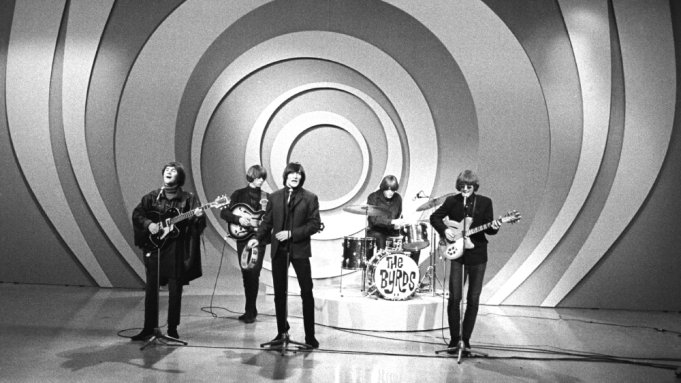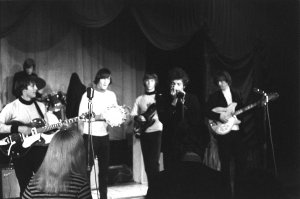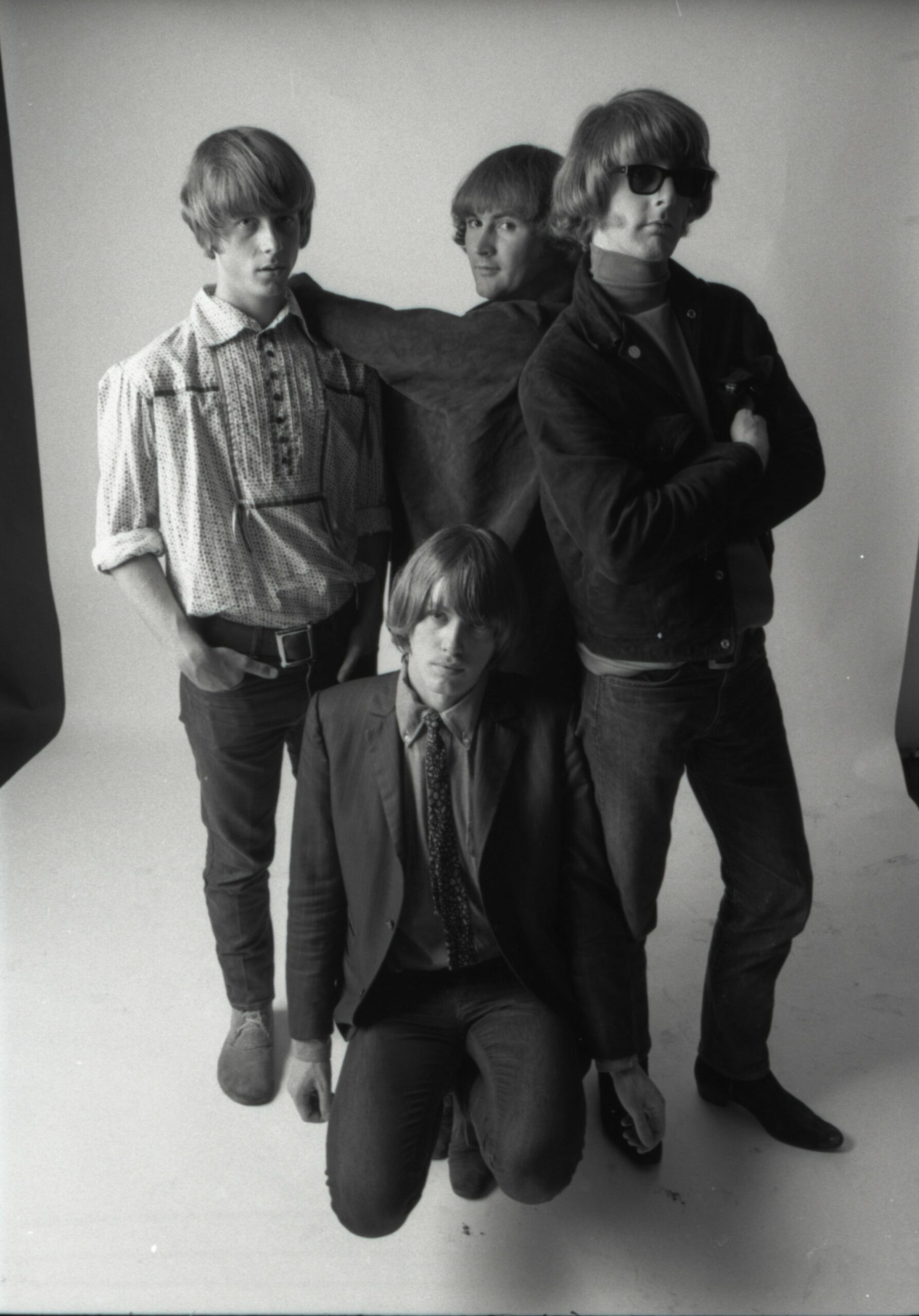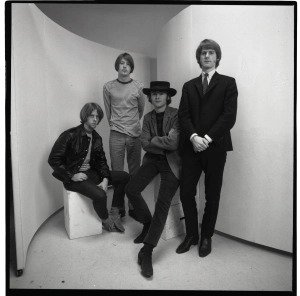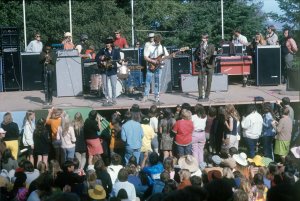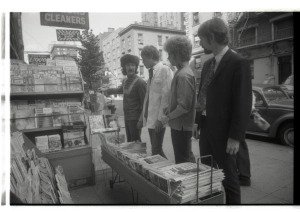
‘Western Edge: The Roots and Reverberations of Los Angeles Country-Rock’ Review: From Bucolic Twang to Kicking Punk in California
TERRY WYATT/GETTY IMAGES FOR COUNTRY MUSIC HALL OF FAME AND MUSEUM
By Barry Mazor
The Country Music Hall of Fame and Museum looks at the evolving, music-altering West Coast country-rock scene.
As the title of “Western Edge: The Roots and Reverberations of Los Angeles Country-Rock” suggests, the background of the West Coast style is located deep in country music and closely associated with American roots music. And as this new exhibition—an extensive multiyear presentation on that 1960s to 1980s scene at the Country Music Hall of Fame and Museum—reveals, its aftereffects have not been limited by region or passing rock trends. Taking this look back as an integral part of country music’s story is groundbreaking—and pointed. How many people now reading this first heard flowing, twangy steel guitar sounds in the hands of JayDee Maness or Lloyd Green on the Byrds’ “Sweetheart of the Rodeo” album, or as played by Poco’s Rusty Young? These performers enlarged the potential country-music audience.

Bajo sexto used by Los Lobos
PHOTO: BOB DELEVANTE/COUNTRY MUSIC HALL OF FAME AND MUSEUM
Country-rock emerged from some specific places—in particular, catalyst Los Angeles clubs celebrated here. The Ash Grove was headlining acoustic, generally traditional folk music as early as 1958, including the innovative bluegrass bands the Kentucky Colonels, with brothers Clarence and Roland White, and the Dillards. These were instrumentalists and vocalists who leapt to digest the lyrical and melodic extensions of Bob Dylan and the Beatles into their music, and soon emerged as folk-, then country rockers. By the ’60s, the Troubadour was the home of such outright country-rock bands as the Byrds, the Flying Burrito Brothers, and Buffalo Springfield and of iconic singers and songwriters—Joni Mitchell, Linda Ronstadt, Jackson Browne. The longstanding Palomino country-music club would become the base for encounters between mainstream country acts and honky-tonk-loving harder rockers: Dwight Yoakam, Lucinda Williams and Emmylou Harris met Merle Haggard, Buck Owens and Johnny Cash.

Stage costumes used by the Flying Burrito Brothers
PHOTO: BOB DELEVANTE/COUNTRY MUSIC HALL OF FAME AND MUSEUM
The 5,000-square-foot “Western Edge” exhibit, sprawling enough that some permanent museum displays were relocated to make room, showcases memory-evoking stage-wear and notable instruments of the era along with riveting interview videos and artifacts of the clubs, shows, festivals and record albums from the scene.
Fans of this music will thrill to see together, for the first time since their original appearances, the colorful hallucinogens-meet-hillbilly “Nudie” suits created by famed designer Manuel, and donned by Gram Parsons, Chris Hillman and Sneaky Pete Kleinow on the cover of the epoch-marking 1969 Flying Burrito Brothers album “The Gilded Palace of Sin.” Memory-provoking, too, is that combo of bolero jacket, white boots and ripped jeans that Dwight Yoakam wore on stage in the ’80s. Evocative artifacts on display include a nameplate from the street steamroller after which the Buffalo Springfield band was named, original handwritten lyrics of country-rock hits (Rick Nelson’s “Garden Party”; J.D. Souther’s “New Kid in Town”) and posters from festivals where so many of the most famous acts shared stages.
History-making instruments shown include such guitars as Gram Parsons’s Martin 00-21 and Mike Nesmith’s Gibson J-200, the banjo employed by John McEuen of the Nitty Gritty Dirt Band, Mr. Maness’s Emmons pedal steel guitar employed on hundreds of recordings, and David Hidalgo’s accordion. The musicians tended to move from band to band; interactive kiosks enable visitors to explore the moves, interactions and musical connections.
Singer-songwriter Chris Hillman gets overdue special recognition here. The exhibit tracks his movements from young bluegrass musician to bass player in the Byrds (America’s classic answer to the British Invasion), as co-founder of the unquestionably country-rock Flying Burrito Brothers and then of rock bands with both Stephen Stills and Richie Furay, then as a mainstream country hitmaker with the Desert Rose Band in the ’80s. On video, Mr. Hillman is especially articulate about the circumstances in which late-1960s country-rock emerged as a “head for the hills” escape from the often-violent social upheavals of 1968-69 and the excesses of psychedelic rock—a pastoral counterpart to the “Get Back” moves of the same time that sparked a 1950s rock ’n’ roll revival for everyone from Elvis Presley to the Beatles. However laid back, the music screamed “Get me out of here!”

Installation view of ‘Western Edge: The Roots and Reverberations of Los Angeles Country-Rock’ at Country Music Hall of Fame and Museum
PHOTO: TERRY WYATT/GETTY IMAGES FOR COUNTRY MUSIC HALL OF FAME AND MUSEUM
Country-rock went on to arena-filling levels of acceptance (the exhibit tags the time “The Rise and Fall of Empires”) in the hands of the Eagles, Ms. Ronstadt, Neil Young and Crosby, Stills and Nash, for example. To many in the next generation, the music of that time came to seem like sleepy emanations from a complacent musical establishment. The loud and slashing reaction was dubbed “cowpunk.”
The exhibit’s video tour guide to that kicking pushback phase is Mr. Yoakam—who came to Los Angeles enthralled with established country-rock, but quickly adapted to the emerging punk-rock scene he encountered. At once country retro and forward looking, he proved a star to both rockers and “New Traditionalist” mainstream country. He re-established rock’s utility in country as the earlier worthies celebrated here had brought country back into rock. It’s especially laudable that the museum’s in-house exhibit curators didn’t make the common, myopic choice of cutting the story off as soon as those mellow, soft sounds gave way to hard-kicking cowpunk. Such edgy yet rooted performers of the 1980s as Los Lobos, the Blasters, Rank and File, the Long Ryders and Lone Justice get their own well-deserved display.
“Western Edge” is due to run for nearly three years, with related performances, conference panels, playlists and an exhibit book emerging along the way. Eye-opening and exhilarating, it illuminates a scene that developed into a working musical community, and music that has influenced both country and rock to this day.
